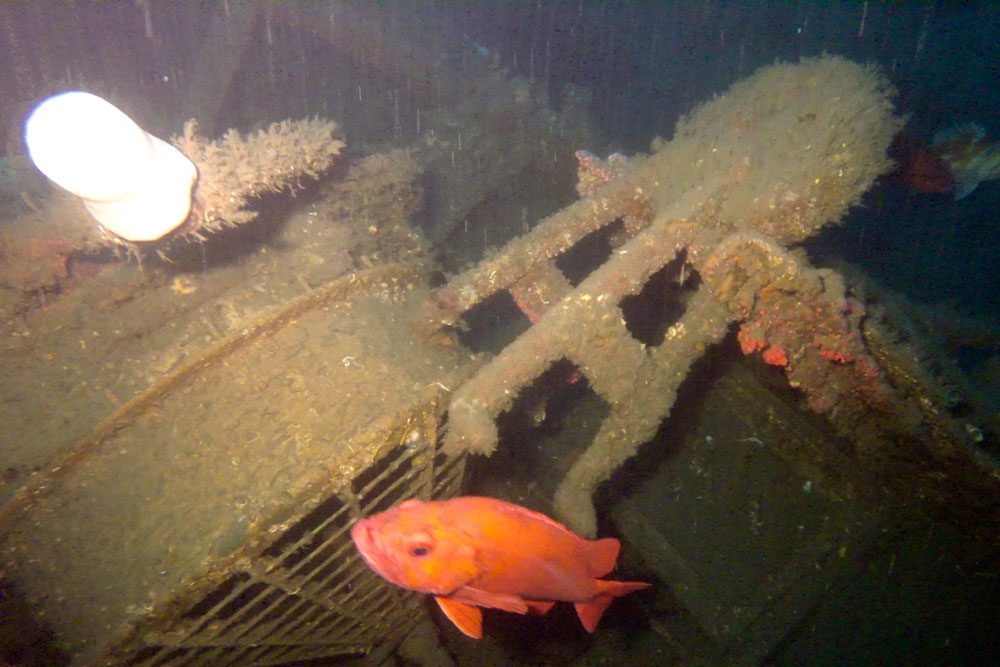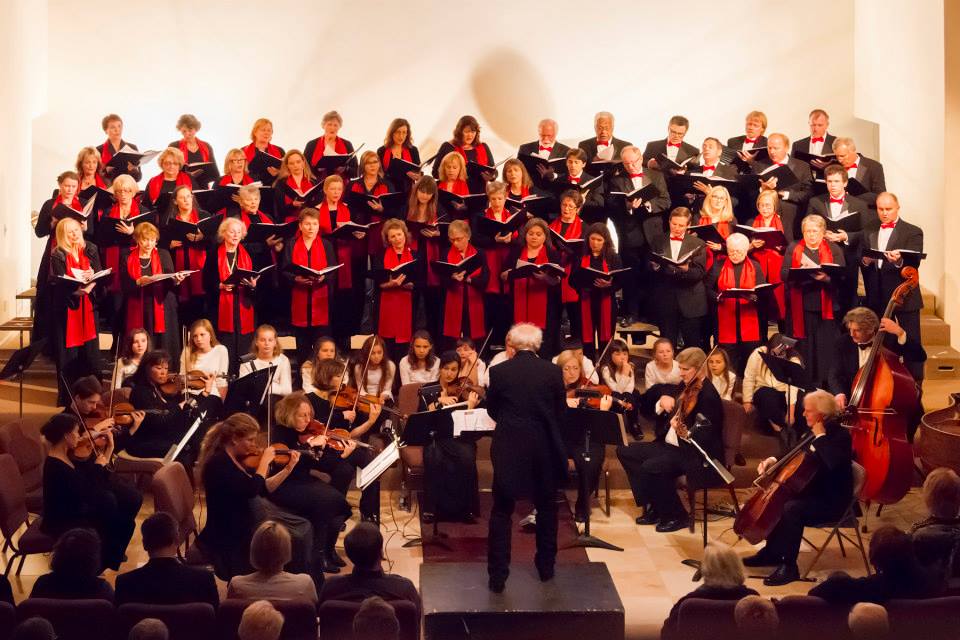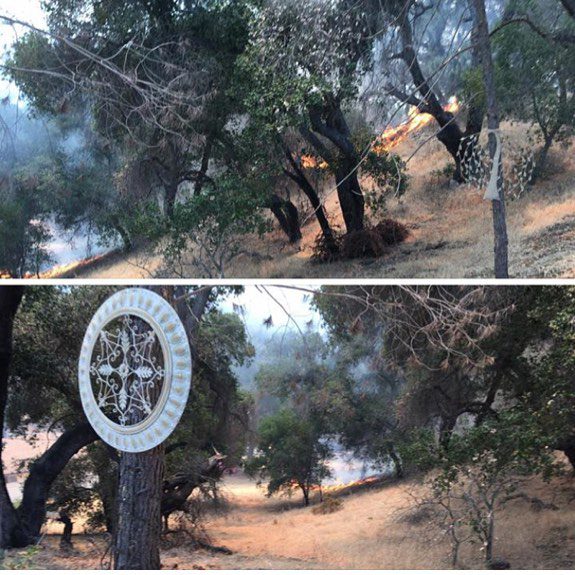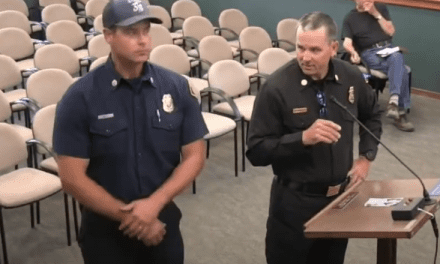By Janene Scully
Noozhawk North County Editor
An underwater excursion using modern-day technology has revealed details about the remains of a shipwreck from 100 years ago in the Pacific Ocean off Point Conception in Santa Barbara County. There will be a lecture on it’s history presented by Robert V. Schwemmer at 7 p.m. on Thursday, Aug. 10 at the Santa Barbara Maritime Museum.
The Coast Guard Cutter McCulloch was discovered in October by a U.S. Coast Guard and National Oceanic and Atmospheric Administration research team, providing details about a little-known naval wreck.
Officials announced the finding on the 100th anniversary of the sinking, and revealed a website, available here, dedicated to the discovery.
On June 13, 1917, the McCulloch collided in dense fog with the passenger steamship SS Governor, causing the cutter to sink.
“Standing in the lifeboats with heads bared, the McCulloch’s sailors wept as the cutter, stern in the air, quivered and sank,” the San Francisco Chronicle reported on June 14, 1917. “The famous old vessel lies on the bottom of the ocean, three miles off Point Conception.”
The McCulloch’s entire crew was rescued and taken aboard the Governor, but the ship’s acting water tender died days later from injuries he suffered in the collision.
Equipped with a remotely operated vehicle, the research team last fall explored the wreckage confirmed as the McCulloch via several key features.
“This discovery highlights an important chapter in U.S. Coast Guard and Navy history, and gives us an opportunity to honor McCulloch’s chief engineer, Frank Randall, the only American fatality at the Battle of Manila Bay, and acting water tender John Johansson, who died from injuries sustained in the collision with the SS Governor,” said Robert Schwemmer, the West Coast regional maritime heritage coordinator for NOAA’s Office of National Marine Sanctuaries and chief archeologist for the mission.
Working off the Channel Islands National Marine Sanctuary’s research vessel Shearwater, the multi-agency science team from NOAA, the National Park Service, and Coast Guard Dive Lockers Alameda and San Diego deployed a VideoRay remotely operated vehicle to survey and characterize the shipwreck.
Coast Guard 11th District cutters Halibut and Blacktip also provided vessel support.
In its underwater mission, the ROV spotted features depicted in historic photographs and ship’s plans.
Those features include the bronze 11-foot propeller; the steam engine and boilers; the engine room skylight; the 15-inch torpedo tube molded in the bow stem; a sounding machine; and 3-pounder and 6-pounder rapid firing guns arranged in sponsons mounted in the stern and the bow quarters of the ship.
The ROV’s cameras revealed McCulloch on the seabed resting on its port side. The wooden hull planking and decks did not survive the harsh ocean conditions as wood-boring organisms left behind steel skeletal remains.
Marine growth, primarily Metridium anemones, blanket the bow’s exterior, while marine life, including ling cod and vermillion and copper rockfish, now inhabit the wreckage.
Before its untimely sinking, the McCulloch had participated in key battles for the United States.
The cutter joined the fleet in 1897, commissioned for the U.S. Treasury Revenue Cutter Service, a predecessor to the Coast Guard.
McCulloch served with Commodore George Dewey in the Battle of Manila Bay in 1898.
“McCulloch and her crew were fine examples of the Coast Guard’s long-standing multi-mission success, from a pivotal naval battle with Commodore Dewey to safety patrols off the coast of California to protecting fur seals in the Pribilof Islands in Alaska,” said Rear Admiral Todd Sokalzuk, the commander of the 11th Coast Guard District.
“The men and women who crew our newest cutters are inspired by the exploits of great ships and courageous crews like the McCulloch. I extend the Coast Guard’s heartfelt thanks to our partners in the National Oceanic and Atmospheric Administration for helping us locate this important piece of our heritage and assisting us in preserving its legacy,” Sokalzuk added.
At the time of its construction, McCulloch was the largest cutter, built at a cost of nearly $200,000.
The ship was equipped with a steam engine and three masts rigged with sails, giving it a cruising speed of 17 knots.
Plans for the next phase of the shipwreck’s exploration remain uncertain.
But anyone hoping to see the wreckage should know that the ship, considered U.S. government property, is protected under the Sunken Military Craft Act of 2004, and the wreckage cannot be disturbed or removed.
The McCulloch’s sinking occurred a few miles south of and six years before the Navy’s worst peacetime loss at Honda Point off the coast of what is now Vandenberg Air Force Base.
On Sept. 8, 1923, 23 sailors died after seven destroyers ran aground when the lead vessel turned too soon, thinking they were at the entrance to the Santa Barbara Channel instead of the treacherous rocky coastline to the north.
Noozhawk North County editor Janene Scully can be reached at jscully@noozhawk.com







